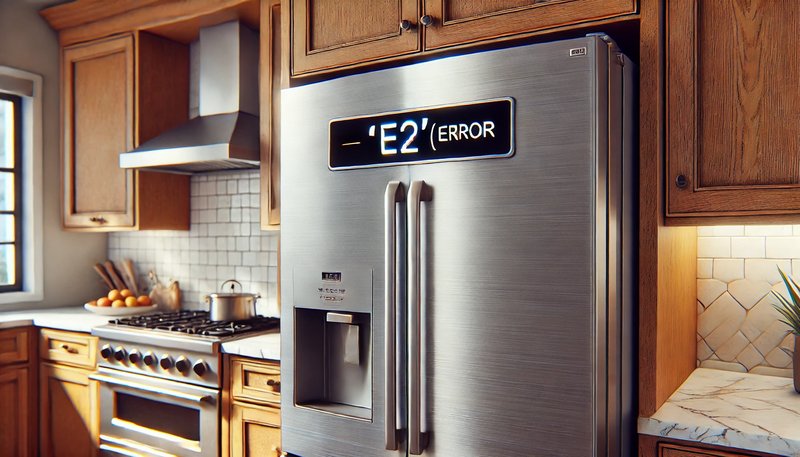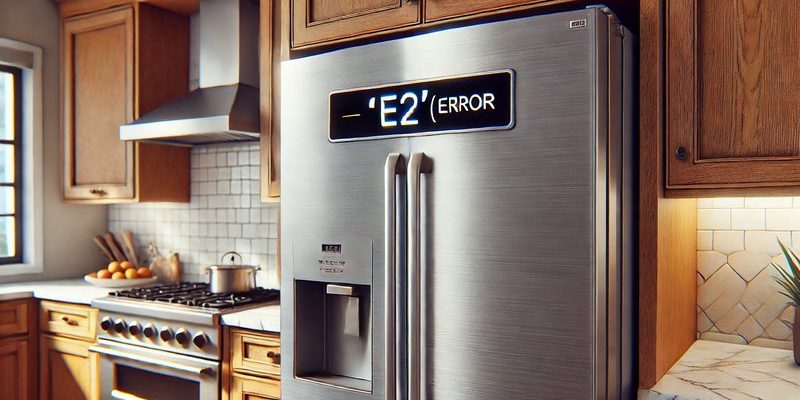
An error code, in simple terms, is like your refrigerator waving a flag to get your attention. Just like when your car’s check engine light comes on, it’s a signal that something might not be working quite right. The SE error code in particular relates to the refrigerator’s internal sensor. This could mean the sensor has detected something amiss in how the refrigerator is functioning, or it might even suggest a problem with the sensor itself. Either way, it’s crucial to understand what this message is trying to convey and how to act on it.
What Exactly Does the SE Error Code Mean?
The SE error code is one of those messages you hope to never see, but if you do, it’s essential to decode it correctly. Essentially, this code is all about your refrigerator’s temperature sensor, crucial for maintaining the perfect climate for your food. Think of it as the gadget’s internal thermometer, constantly checking to ensure your milk stays cold and your ice cream doesn’t turn to soup.
Now, why would the sensor raise an alarm? There are a few possible reasons. It could be something as minor as a temporary glitch in the system—like briefly losing your internet connection. Sometimes, a power surge or a simple error in the sensor’s calculations can trigger this code. On the other hand, it might indicate more serious issues like a faulty sensor that’s unable to read temperatures accurately. Imagine trying to bake a cake without knowing your oven’s temperature; things could go awry pretty quickly.
If your fridge is still cooling effectively, that’s a reassuring sign, but it’s not a green light to ignore the error. This code is there for a reason and continuing to use the refrigerator without addressing the underlying issue could lead to bigger problems down the line, from spoiled food to more extensive repairs.
Is It Safe to Keep Using the Refrigerator?
Here’s the deal: seeing the SE error code doesn’t necessarily mean your fridge is going to give up the ghost right away. However, it’s not something you should ignore either. If your refrigerator is still running and keeping things cool, it reduces the immediate risk, but the root of the issue still needs to be addressed. It’s a bit like driving with a small nail in your tire—you’re okay for now, but eventually, it could lead to a bigger problem.
Safety is always a top priority, especially considering the invaluable role your refrigerator plays in your daily life. It’s responsible for keeping food safe and fresh, and any malfunction could potentially compromise that safety. You don’t want to end up with spoiled food or even risk foodborne illnesses just because you ignored the warning signs.
The best course of action is to continue using the refrigerator for now, but take immediate steps to address the code. Call a professional technician to inspect the appliance. They’ll have the tools and the know-how to determine whether it’s a simple fix or if something more serious needs attention. In the meantime, keep an eye on the temperature inside the fridge to ensure everything stays suitably cold.
Steps to Fix the SE Error Code
You might be wondering, how do you actually go about fixing this mysterious code? Well, the first step is to try a simple reset. Unplug your refrigerator for a few minutes—think of it as restarting your computer when it’s acting up—then plug it back in. Sometimes, this can clear the error if it was just a temporary glitch.
If the reset doesn’t do the trick, it’s time to dig a little deeper. Checking the temperature sensor connections can be a bit tricky for beginners, but often it involves ensuring wires and connections are secure and haven’t come loose over time. If you’re comfortable, this could be a DIY fix, but don’t hesitate to reach out to a professional if you’re not confident handling electrical components.
Should these steps not resolve the issue, it may indeed be a problem with the sensor itself needing replacement. This is where professional help is crucial. A technician can accurately diagnose the problem and replace the faulty sensor with minimal hassle, ensuring your refrigerator returns to its optimal function without delay.
Preventative Measures for Future Peace of Mind
To prevent this pesky SE error from popping up again, there are a few maintenance tips and habits you can adopt. Think of them as routine check-ups for your trusty appliance. Regularly cleaning the coils and ensuring the fridge remains properly ventilated can significantly improve performance and prevent errors.
Also, keep an eye on the temperature settings. It’s easy to overlook, but ensuring your fridge and freezer are set to appropriate temperatures is crucial not just for performance but also energy efficiency. Sometimes, errors occur due to something as simple as the fridge working too hard to reach unnecessarily low temperatures.
Finally, consider scheduling regular maintenance checks with a professional. Just as you wouldn’t wait until your car breaks down to get it checked, applying the same logic to your appliances can save you time, stress, and potentially a lot of money in the long run. A bit of prevention can keep future errors at bay and ensure your fridge—and the food within—remains in top-notch condition.
